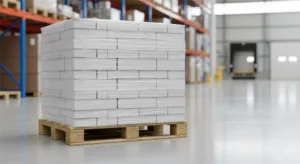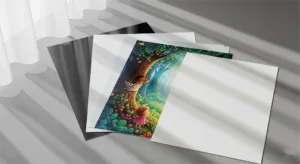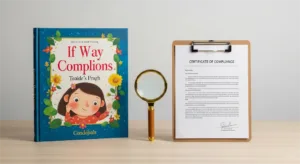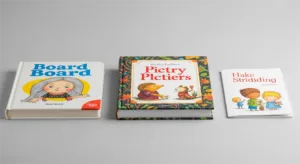You’ve asked the question, “Is printing in China really cheaper?” and you deserve more than a simple yes or no. At Mainland Printing, we know that behind this question are high stakes—your budget, your business, and very often, your dreams.
Are you an independent author or artist, wondering if the dream of holding a physical edition of your work is financially viable? You’ve poured your heart and your savings into this project, and the fear of a costly mistake is significant. You need a partner who understands that this isn’t just a product; it’s the culmination of your creative vision.
In this comprehensive guide, we will walk you through every single element of the cost, process, and risks involved. We will pull back the curtain on the entire journey, from a file on your computer to boxes on your doorstep. Our promise is to replace your uncertainty with clarity and empower you with the knowledge to take full, confident control of your printing project.
The Direct Answer to Your Core Question
Let’s address your question directly. For bulk orders produced with offset printing, the answer is an emphatic yes. When your project requires 500 copies or more, you can realistically expect to save between 30% and 60% on your total cost compared to producing a similar run locally in the United States or Europe.
This significant cost advantage is rooted in the technology and scale of production, which is why it’s crucial to understand the difference between offset vs digital printing.
Many local services specialize in Print-on-Demand (POD), which is excellent for printing single copies or very small batches at a high per-unit price. For quality and volume, however, the industry standard is offset printing.
This traditional method involves creating custom printing plates and setting up large, high-speed presses—a process with an initial fixed cost of roughly $500 to $1,500. While this makes printing just a few copies uneconomical, the cost to produce each additional book becomes incredibly low.
China’s manufacturing ecosystem is a global leader in large-scale offset printing. The financial ‘tipping point’ to switch from POD to offset for authors and publishers usually occurs around the 500-copy mark.
Below this quantity, the convenience of local POD may be preferable. Above it, the dramatic per-unit savings from an overseas offset print run become too significant to ignore.
But—and this is the most important part of this entire guide—these savings are only real if you can accurately calculate the Total Landed Cost. This is the final, all-inclusive price to get the books from the factory floor to your front door, and it’s what we will now break down for you completely.
Deconstructing the Total Landed Cost: A Step-by-Step Guide
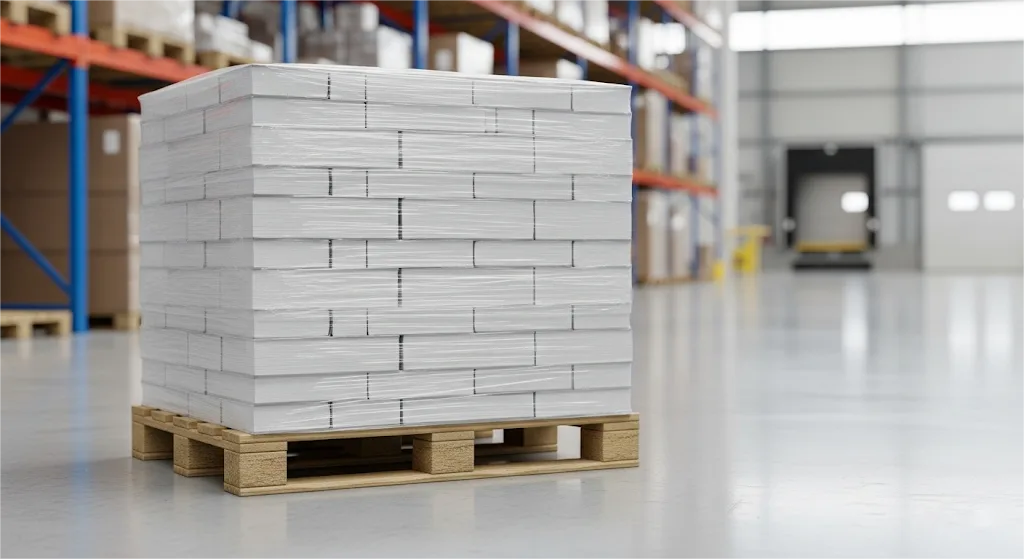
To accurately budget for your project, it’s essential to move beyond the per-book production price and understand the entire financial journey. As a general rule of thumb, your final cost is often comprised of approximately 60% for the actual book production and 40% for the complex chain of logistics and shipping that gets it to you.
A trustworthy printing partner will make every component of that 40% completely transparent. Let’s walk through the five stages of your book’s journey from our factory floor to your front door.
Stage 1: Unit Production Cost
This is the foundational cost to manufacture your book. The primary savings here are driven by efficient production workflows and access to raw materials at a massive scale. But there’s a deeper, more significant advantage at play: industrial clusters.
Our facilities are located in the Pearl River Delta, a global printing hub. This isn’t just a location; it’s a dynamic ecosystem. This means if you want a specific type of textured, FSC-certified paper for your cover, we don’t wait weeks for it to be shipped from a distant supplier; we can often source it from a partner just a few dozen kilometers away.
This deep network of specialized paper mills, ink manufacturers, and finishing houses reduces material costs, shortens lead times, and gives you a far wider palette of creative options than a printer in an isolated region could ever offer.
Stage 2: China-Side Logistics
This is a standard, predictable fee that covers the crucial first leg of the journey. It includes the cost of securely trucking your finished books from our factory to a major international port like Shenzhen or Shanghai, as well as the preparation of all necessary export documentation, such as the commercial invoice and packing list. We manage this entire step for you.
Stage 3: International Shipping
This is where you’ll make a critical decision that balances your budget against your timeline. Consider a shipment of 2,000 books weighing around 1,000 kg (2,200 lbs).
- Sea Freight: This is the standard for 99% of bulk printing projects. While transit time is longer (30-50 days to the US or Europe), the cost is a fraction of air freight, making it the only economical choice for volume shipments.
- Air Freight: This is a premium service reserved for time-sensitive materials, like advance copies for a book launch or urgent samples. To ship that same 1,000 kg shipment by air could cost upwards of $7,000, illustrating why it’s not used for main production runs.
Stage 4: Destination Customs & Duties
This stage is a source of significant anxiety for many first-time importers, but it doesn’t have to be. Here is the critical piece of information you need:
Under an international agreement, printed books are classified under HS Code 4901. For imports into both the United States and the European Union, books under this code are duty-free, meaning they have a 0% tariff.
You can verify this yourself on the official U.S. International Trade Commission’s HTS database or the EU’s TARIC portal. While some European countries may apply a local Value-Added Tax (VAT), you will not face unexpected punitive tariffs on your book shipment.
Stage 5: Final Mile Delivery
This is the final leg of the journey, where your books are transported from the destination port to your specific warehouse, office, or home address. This is handled by a domestic carrier, and the cost is included in a complete “Door-to-Door” quote.
The Hidden Cost of an Incomplete Quote
Understanding these five stages is crucial because not all quotes are created equal. We recently consulted an entrepreneur, let’s call her Maria, who was thrilled to receive an extremely low quote from another vendor. She paid her deposit, and weeks later, the vendor informed her the books were ready for pickup… “Ex-Works” (EXW) at their factory in China.
Her heart sank. She suddenly realized that incredibly low price didn’t include a single dollar for shipping. She was now responsible for frantically finding and paying for a freight forwarder, a customs broker, and a trucking company on her own. The stress was immense, and the final cost was far higher than our all-inclusive “Door-to-Door” quote had been.
This is why we are adamant about transparency. We believe our job is to deliver a finished product to your door for a price that is clear and agreed upon from the very beginning.
A Case Study in Cost
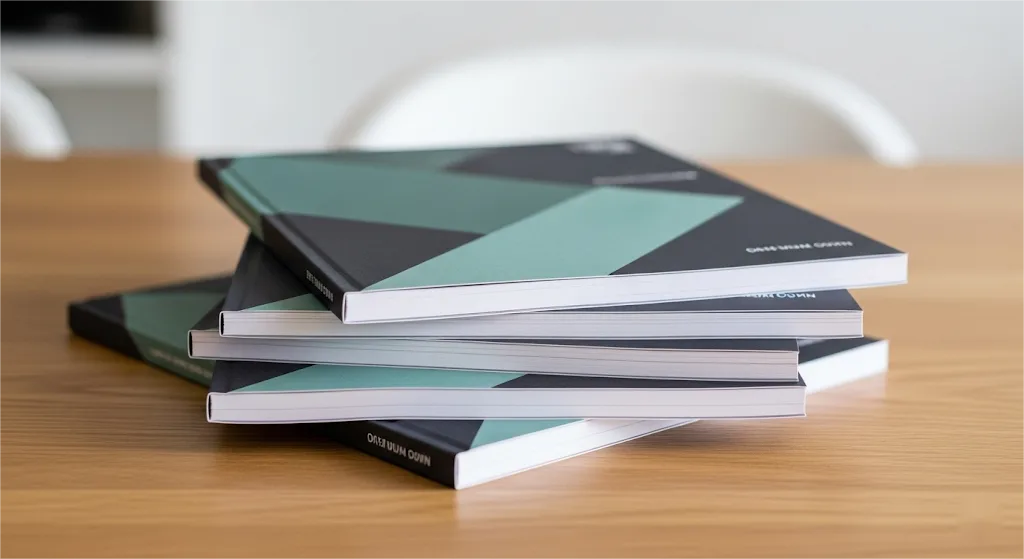
Abstract concepts are useful, but nothing beats seeing the numbers work in practice. Let’s apply this framework to a very common project we manage for our clients: a first-run printing for a self-published author or small publisher.
3,000 Softcover Books to California
Comprehensive Cost Breakdown: 3,000-Book Project (China vs. Local)
|
Cost Component |
Example Cost (3,000 Books to USA) |
Key Considerations / What This Means for You |
|
Unit Production |
~$7,500 (~$2.50 / unit) |
This is the largest cost (~60% of total). The significant savings here are driven by the scale of offset printing. Your choices in paper, binding, and finishes directly impact this price. |
|
International Sea Freight |
~$1,350 |
This is the key to affordability. Planning for the 30-50 day transit time of sea freight is crucial. Air freight is 5-10x more expensive and reserved only for urgent samples. |
|
Logistics & Customs |
~$1,650 |
This covers all other fees: China-side trucking, export documents, port fees, and customs brokerage. A “Door-to-Door” quote includes all of this. For books (HS Code 4901), the US/EU import tariff is 0%. |
|
Total Landed Cost (China) |
~$10,500 (~$3.50 / unit) |
This is the true, all-in cost to your door. This is the only number you should use for your budget and for comparison. |
|
Estimated Local Cost (USA) |
~$21,000 (~$7.00 / unit) |
A comparable offset print run in the US is significantly higher due to labor and overhead costs. The potential saving by printing in China for this project is ~50%. |
Here are the project specifications:
- Product: Softcover (perfect bound) book
- Size: 8.5″ x 11″
- Page Count: 200 full-color interior pages
- Quantity: 3,000 units
- Destination: A business address in California, USA
Detailed Cost Breakdown
Here is a realistic, itemized breakdown of what the Total Landed Cost would look like for this project:
Unit Production Cost: At a per-unit price of $2.50, the total for manufacturing the 3,000 books is $7,500.
China-Side Logistics: Includes trucking to the port and export documentation, totaling approximately $450.
International Sea Freight: Shipping from our port in China to the Port of Los Angeles would be around $1,350.
Destination Port & Customs: This covers U.S. port fees and customs brokerage services, costing about $600.
Final Mile Delivery: Trucking the pallets from the port to the final California address is approximately $600.
Summing it all up, the Total Landed Cost is $10,500. When you divide this by the 3,000 books, you get a final, all-inclusive per-unit cost of $3.50.
The Crucial Comparison: China vs. Local Printing
Now, let’s place that number in context. To produce the same 3,000-unit offset print run at a comparable quality with a local printer in the United States, the per-unit cost would be approximately $7.00, for a total project cost of $21,000.
By choosing a transparent overseas partner for this project, the author saves $10,500—a cost reduction of 50%.
This case study perfectly illustrates a fundamental principle of the publishing world. As the highly respected industry expert Joel Friedlander, founder of The Book Designer, often explained, there’s a clear “tipping point.”
While local print-on-demand is perfect for testing the market, he noted, “…once you have proven demand and need to print 750, 1,000, or more copies, the per-unit cost of POD becomes prohibitive. This is the tipping point where sourcing an offset print run from an overseas printer… transforms your financial equation.”
You’re in Control: 3 Levers to Actively Reduce Your Costs
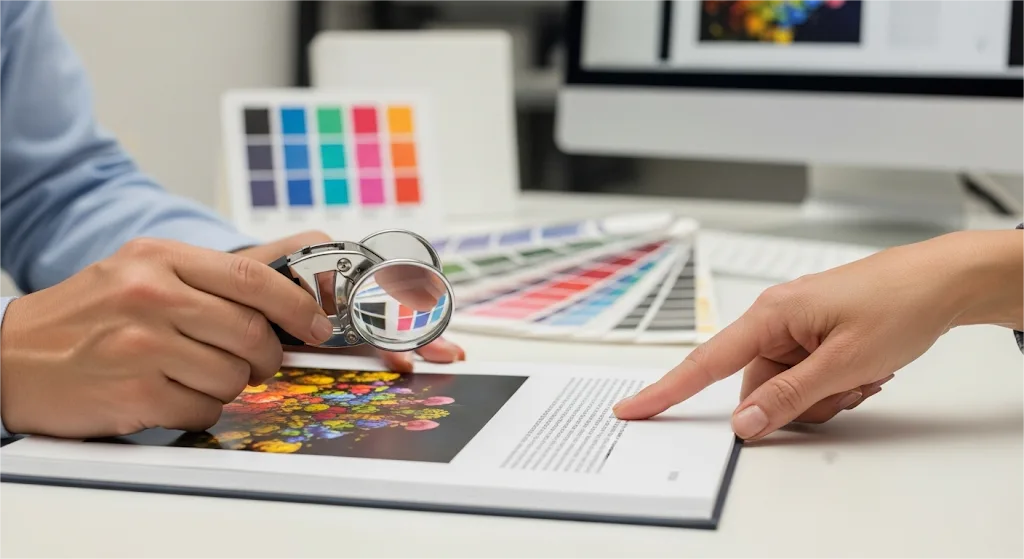
Understanding the cost breakdown is the first step. The next, more empowering step is realizing that you are not just a passenger on this journey; you have significant influence over the final price. A large portion of your project’s cost is directly tied to a few key decisions you make.
Let’s look at the three most powerful levers you can pull to optimize your budget.
Lever 1: The Power of Quantity
As we’ve mentioned, offset printing has initial setup costs, typically ranging from $500 to $1,500. This covers creating the printing plates and preparing the large presses for your specific job. This fixed cost is the primary reason why quantity is the single most impactful lever you control.
Consider a hypothetical $1,000 setup cost for your project:
- At 500 copies: that setup cost adds $2.00 to each book.
- At 2,000 copies: it only adds $0.50 to each book.
- At 5,000 copies: it adds just $0.20 to each book.
This simple math illustrates the core principle of offset printing: the higher your print run, the more that fixed cost is diluted, leading to a dramatically lower per-unit price.
Lever 2: The Art of Specifications
Every physical attribute of your book is a variable that can be adjusted to meet your budget. An experienced printing partner can guide you through these choices to find the perfect intersection of your creative vision and financial reality.
- Binding: While a case-bound hardcover book is beautiful, a premium softcover with a thick, laminated cover stock can provide a substantial, high-quality feel for a fraction of the price.
- Paper: Ask your printer about their “house stock.” These are high-quality papers they purchase in immense quantities and can therefore offer at a better price. For a novel, for instance, a slightly lighter interior paper might be unnoticeable to the reader but could reduce both your production cost and your final shipping weight.
- Finishes: You can still achieve a high-end look without a high-end cost. Instead of applying a foil stamp to the entire title, for example, consider using it on just a single, impactful word or a small logo. This creates an elegant touch while using significantly less material.
Lever 3: The Value of Time
Your project timeline is your most underrated cost-saving tool. The decision to use sea freight over air freight is determined entirely by how much time you have.
Remember the $1,350 sea freight cost from our case study? Choosing air freight for that same shipment would have transformed it into a $7,000+ expense, instantly erasing a huge portion of your production savings.
By planning your project to be in our hands 4 to 6 months before you need the books delivered, you are not just practicing good project management; you are executing a powerful financial strategy that locks in the most significant logistics savings possible.
Beyond Cost: Answering Your Questions on Quality & Risk
Even when the numbers make perfect sense, we know there are lingering questions for anyone considering overseas printing for the first time. These concerns almost always revolve around two things: “Will the quality meet my standards?” and “What are the risks involved?” Let’s tackle these head-on.
How Can I Guarantee Quality From 10,000 Miles Away?
This is the most important question, and the answer is simple: you are the ultimate quality controller. The tool that gives you this power is the physical proofing process. A digital PDF on your screen can never truly represent the final printed product, a lesson one of our clients learned the hard way.
Let me tell you about Alex, a talented graphic novelist who had poured two years into his first book. To save about $300 and a week of waiting, he decided to skip ordering a physical proof, approving the entire 2,000-copy run based on the digital file that looked vibrant on his backlit computer monitor. When the books arrived, his heart sank. The printing process uses CMYK inks that absorb into paper, and the final colors were noticeably darker and muddier than the luminous RGB colors on his screen. The cover paper also felt thinner than he had imagined.
That $300 he “saved” became his biggest regret. The lesson is invaluable: a physical proof is not an optional expense; it is the single most effective insurance you can purchase for your project’s success. It is your opportunity to hold your book, feel the paper, and see the true colors before you commit to the full print run.
Is a Lower Cost a Code Word for Lower Quality?
It’s a fair question, but it’s based on an outdated perception of global manufacturing. Today, China’s printing industry is a hub for expertise and advanced technology, especially for complex projects that require incredible precision. Think of intricate pop-up children’s books or high-end board games with dozens of unique components.
This is why so many successful creators choose to manufacture here. As Jamey Stegmaier, President and co-founder of the best-selling Stonemaier Games, explains from his extensive experience:
“The key isn’t about finding the cheapest option, but about building long-term relationships with trusted manufacturing partners who have the expertise, equipment, and scalability we need.”
Choosing the right partner means you are accessing a level of craft and capability that is often more advanced and specialized than what is available locally for a similar price.
What Are the Real Risks to Focus On Today?
While many first-time buyers worry about their intellectual property (IP), for any reputable, export-focused printer, your IP is sacred. Our business is built on global trust, and we would never jeopardize that.
In today’s world, a more realistic risk to consider is global supply chain volatility. As we’ve all seen in recent years, events like port congestion or shipping container shortages can cause unexpected delays. The right partner isn’t just a printer; they are your logistics partner. They should have a network of freight forwarders and a deep understanding of global shipping lanes to help you navigate potential disruptions and manage your timeline effectively. This is where a partner’s experience becomes just as valuable as their printing presses.
Your Next Step: From Knowledge to Action
You have now journeyed through the entire process—from the initial question of cost to the critical details of logistics, quality control, and risk management. You are equipped with the knowledge that separates a successful, cost-effective international printing project from a frustrating and expensive one. The final step is to apply this framework to your own unique project.
To help you on your way, we’ve compiled a final checklist based on years of experience, summarizing the most important lessons from this guide.
A Final Checklist to Guide Your Decision
- Focus on the Total Landed Cost: Look past the initial per-book price. A complete, door-to-door quote is the only number that matters, as an incomplete one can hide thousands of dollars in logistics fees.
- Submit High-Resolution (300 DPI) Files: Ensure your images and artwork are prepared correctly for print. Low-resolution files are one of the most common and irreversible sources of disappointment in the final product.
- Build a Realistic Timeline: Your calendar is a powerful tool. A well-planned timeline that accommodates 4 to 6 weeks for sea freight and customs is essential for keeping logistics costs down.
- Always Invest in a Physical Proof: For any new project, a hard-copy sample is non-negotiable. It is the only way to truly approve the final color, paper stock, and binding feel before you commit to the full production run.
- Communicate with Specifics: Avoid ambiguity, as recommended by many professional self-publishing guides. Instead of asking for “a nice, thick paper,” specify “a 157gsm matte art paper.” Clear, technical communication prevents misunderstandings and ensures you get exactly what you envision.
Get Your Free, Transparent Quote
Successful and affordable printing in China is built on a foundation of transparency, expertise, and true partnership with a provider like Mainland Printing. You are no longer just looking for a price; you are looking for a partner who can navigate this process with you.
The final step is to see how these principles apply to your book. We invite you to reach out for a free, no-obligation quote. We will provide you with a comprehensive, easy-to-understand breakdown of your Total Landed Cost, reflecting the complete transparency we’ve discussed throughout this guide. Let’s work together to produce a high-quality edition of your manuscript.


